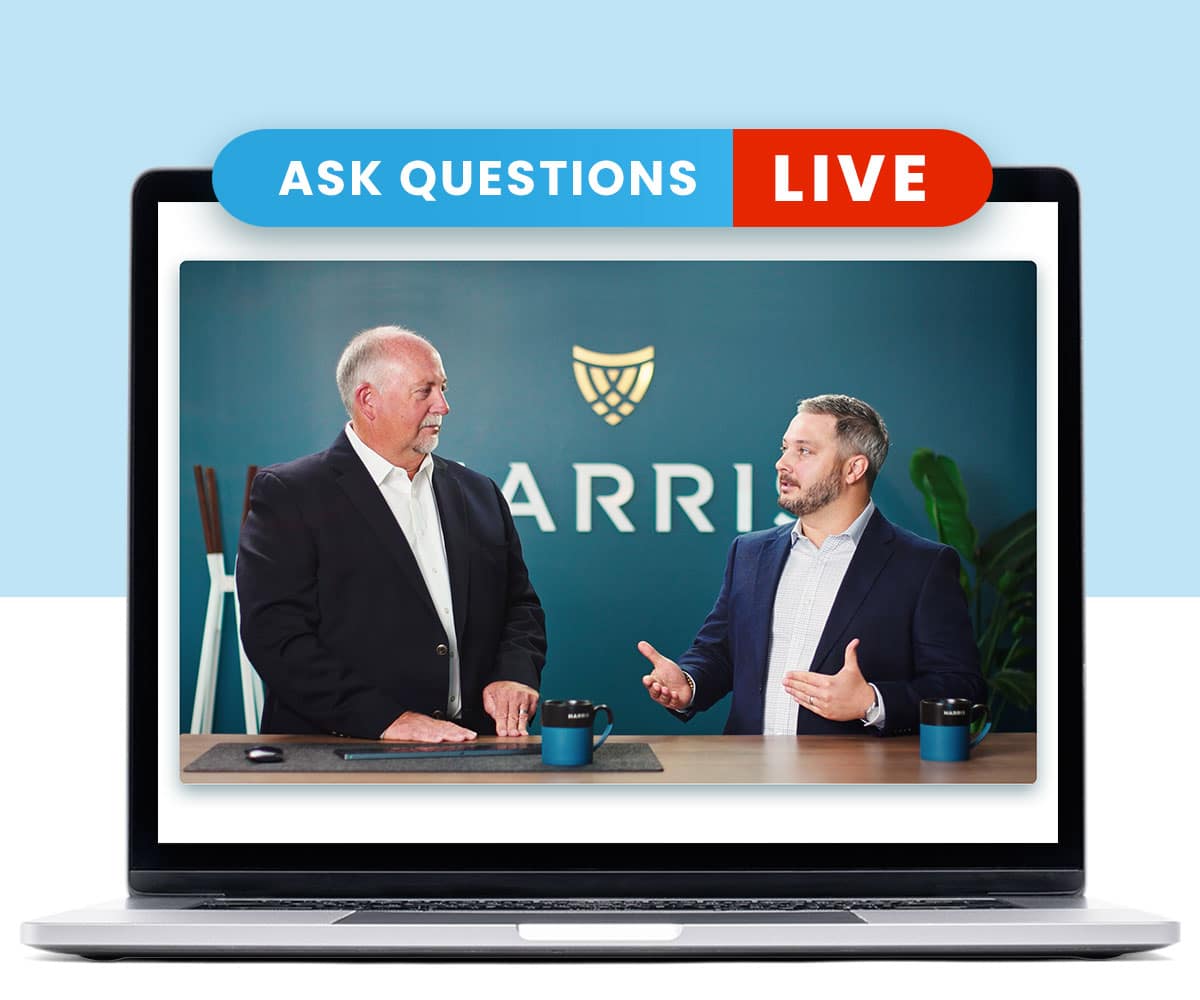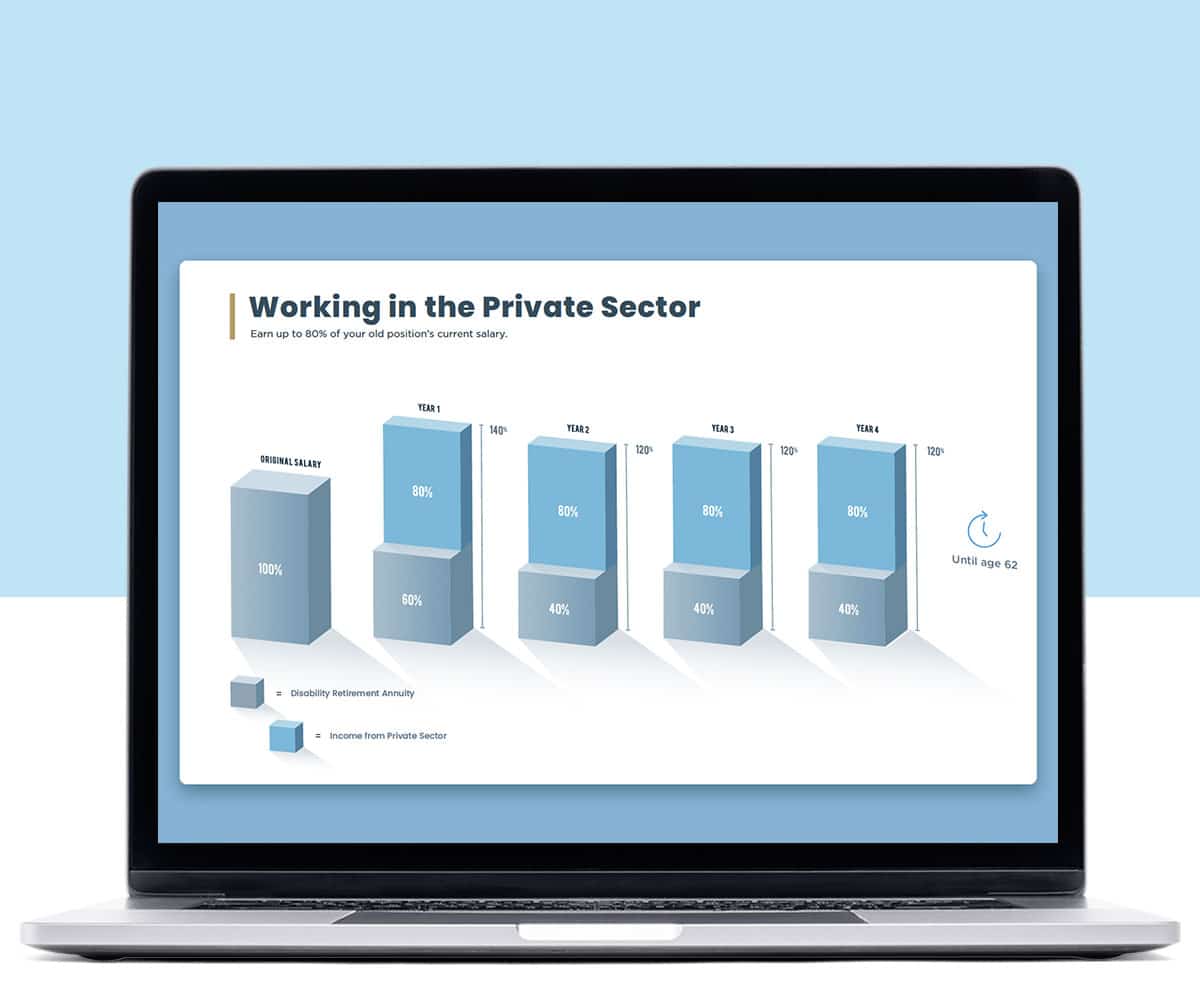Being labeled totally disabled can be difficult to accept and you may be wondering if it is still possible to work. It is possible for a person with a total disability to continue working, but there are certain restrictions put in place by the Social Security Administration (SSA).
If you are approved for Social Security Disability Insurance (SSDI), you have been deemed to have a total disability and you will need to know your restrictions. But there are other disability benefits, like Federal Disability Retirement that may be able to supplement your income.
Disability Benefit Options
If you are a federal employee who is considering applying for SSDI due to a total disability, there is the likely chance that you will also qualify for Federal Disability Retirement. Federal Disability Retirement is an often-unknown benefit for disabled federal employees that will allow you to retire now while maintaining your federal retirement benefits.
One of the greatest benefits to Federal Disability Retirement is the ability to continue working in the private sector and make up to 80% of your federal position’s current salary. However, if you are also approved for SSDI, there will be a stricter earning cap.
Applying for SSDI is a necessary step of the Federal Disability Retirement process and it’s important to understand the rules surrounding your SSDI benefits before you make any decisions.
Earning Limit
If you are approved for SSDI, you must stay under an earning limit set by the SSA known as “substantial gainful activity.” If you are found to be making over this limit while on SSDI, you will lose your benefits.
The monthly SGA limit for 2023 is $1470 or $2460 if you are blind. If you want to continue working, you must stay under this earning limit. But it’s important to keep in mind that not all forms of income are counted towards this limit. Investments, interest, and a spouse’s income do not count against your SGA limit.
There are many employers who would be willing to curate a schedule with you that allows you to work while staying under the SGA limit. Volunteer work is another option if you are looking for a way to keep a schedule while giving back to your community.
Keep in mind that most people approved for this benefit cannot continue to perform any kind of work due to the limitations of their disability. The requirements for SSDI are strict and it is important to understand what you are getting into before applying.
How Much Will You Receive?
While on SSDI you will receive a monthly amount based on your Average Indexed Monthly Earnings. The Social Security Administration can provide you with an estimate of this amount for you to properly plan for your future.
If you are also approved for Federal Disability Retirement, there will be an offset between the two benefits. The first year your Federal Disability Retirement will be reduced by 100% of your SSDI benefit, and every year after your Federal Disability Retirement will be reduced by 60% of your SSDI benefit.
Your Federal Disability Retirement is calculated based on your high 3 average– the first year after approval you will receive 60% of your high 3, and every year after you will receive 40% of your high 3.
The combination of these two benefits can provide you with a significant amount of income, to the point where you may not need to continue working, but it is always an option. SSDI and Federal Disability Retirement provide you with the security of knowing that even if you are unable to work due to your disability, you still have a way to make ends meet.
If you are looking to apply for Federal Disability Retirement, contact our firm today to learn more about how we can help you!



